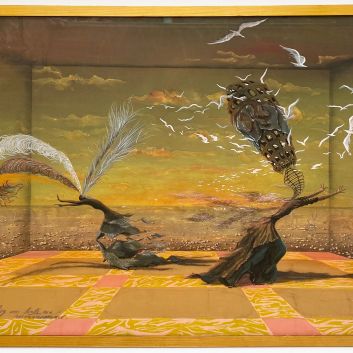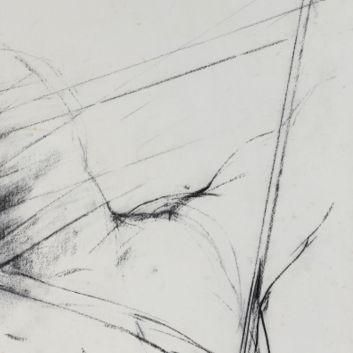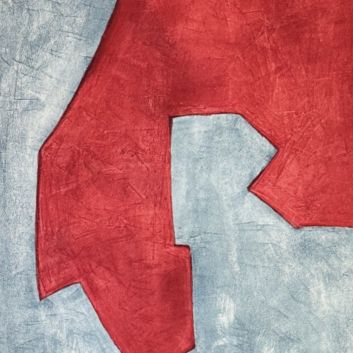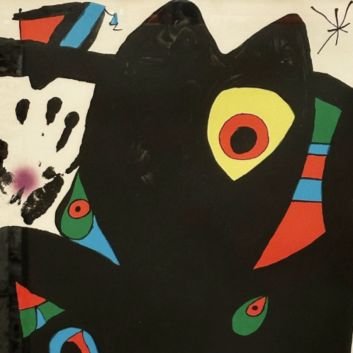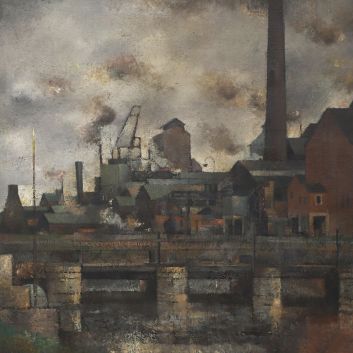Rating and value of paintings by Zdzisław Beksiński

If you own a work by or based on the artist Zdzisław Beksiński and would like to know its value, our state-approved experts and auctioneers will guide you.
Our specialists will carry out a free appraisal of your work, and provide you with a precise estimate of its current market value.
Then, if you want to sell your work, we'll point you in the right direction to get the best possible price for it.
Artist's rating and value
Zdzisław Beksiński is a Polish painter whose surrealist and fantastical works are quite popular on the auction market.
In recent years, the value of his paintings has risen considerably. As a result, Zdzisław Beksiński 's works are highly prized by collectors.
On the auction block, it's his surrealist paintings that meet with great success. The prices at which his works sell range from €20 to €350,000 - a substantial delta, but one that speaks volumes about the value that can be attributed to his works.
In 2021, his 1978 oil on canvas Postac, depicting a half-vampire, half-ghost figure against an apocalyptic backdrop, sold for €350,000 against an estimate of €110,000-150,000.
Order of value from the most basic to the most prestigious
Technique used | Results |
|---|---|
Photography | From €240 to €5,500 |
Print - multiple | From €20 to €16,400 |
Drawing - watercolor | From €160 to €75,700 |
Sculpture - volume | From €16,600 to €107,700 |
Paint | From €3,600 to €350,000 |
Response in less than 24h
The artist's style and works
With a deeply dark and unique style, Zdzisław Beksiński is often associated with dystopian art and the expression of an apocalyptic, nightmarish vision.
His works delve into the themes of death, time and the erosion of flesh, exploring the twists and turns of existential angst and humanity's collective fears.
Beksiński's skill in handling strangely saturated colors and rich textures blends with gaunt silhouettes and desolate landscapes, creating an atmosphere both hypnotic and disturbing.
Recognizable by their meticulous composition, Beksiński's works captivate by their visual power: ghostly figures, monumental and labyrinthine architectures, often distorted, emerge in scenes where we feel the echo of a dull and omnipresent anxiety.
The artist relentlessly explores the materiality of space and decomposition, employing techniques such as scraping and mixing mediums that add an unsettling, immersive textural depth to his canvases.
His unique style, flirting with surrealism and horror, is never a simple illustration of fear, but a visual reflection on the fragility of existence.
Beksiński makes each work an invitation to contemplate human finitude in a universe where anguish becomes almost tangible, capturing the symbols of collective dread in an inimitable artistic language.
His stylistic vein is naturally close to surrealist artists such as René Magritte or Salvador Dalibut also symbolist artists such as Gustave Doré.
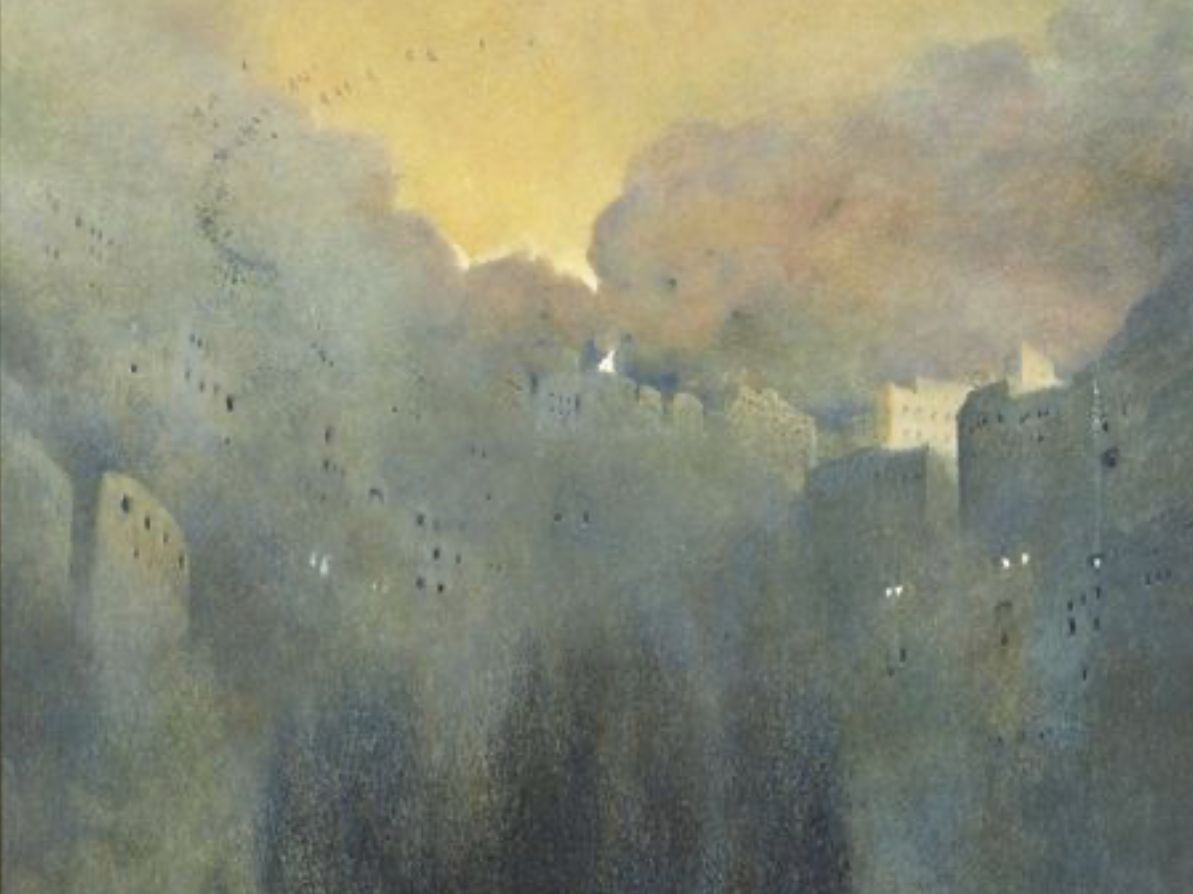
The life of Zdzisław Beksiński
Zdzisław Beksiński was born into a modest family in Sanok, Poland, in 1929. From an early age, he developed a passion for art, distinguishing himself by his taste for dark, mysterious worlds. He studied architecture in Krakow, a course that would influence the rigor and structure of his compositions.
On his return to Sanok, he took up photography, sculpture and then painting, constantly seeking to express the inner visions that obsessed him.
From the 1970s onwards, Beksiński devoted himself fully to painting, developing a unique style in which desert landscapes rub shoulders with ghostly figures and nightmarish scenes. These early exhibitions captivated the public, propelling the artist to the heart of the Polish art scene.
Fascinated by masters such as Bosch and Goya, he relentlessly explores universal themes such as death and anguish, translated into works that seem to emerge from a dark dream.
In the 1980s, Beksiński's fame spread beyond Poland's borders, notably to Japan, where his style was greeted with keen interest. However, he remains detached from any quest for fame and continues to create in isolation, faithful to his visual universe.
This international success does not distance him from his personal approach: Beksiński remains faithful to his inner obsessions and apocalyptic vision.
In 2005, Beksiński was murdered in his home, marking a tragic end to a life dedicated to art.
Despite his sudden death, his work endures and continues to attract attention, his singular style remaining a benchmark in contemporary art for its uncompromising exploration of human darkness.
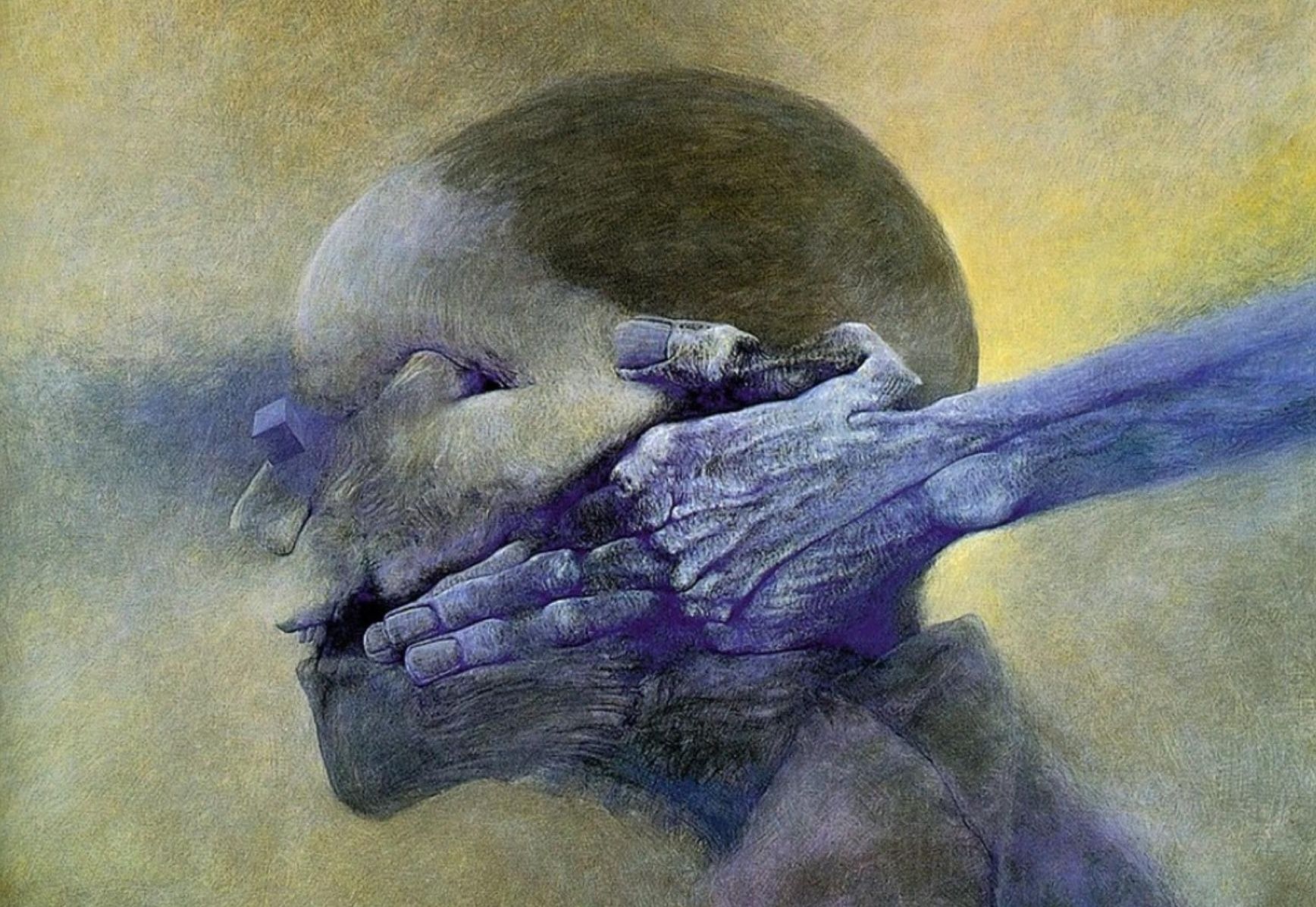
Focus on Untitled (76), Zdzislaw Beksinski
Disturbingly intense, this untitled work by Zdzisław Beksiński immediately captivates with its striking depiction of human suffering and alienation. Here, Beksiński reveals a face with indistinct, almost ghostly features, imprisoned by a skeletal hand with long, gnarled fingers.
The texture of this hand, veined and ridged, seems to be that of a being both alive and decomposed, posing a hold that appears almost forced, as if it sought to silence the central figure or prevent it from breathing.
Tones of blue and violet add to this cold atmosphere, creating a contrast with the blurred, yellowish background that envelops the scene in an ethereal, almost radioactive light.
In this painting, Beksiński tackles the depths of human anguish, exploring themes of death, imposed silence and psychological deterioration.
This face, smothered by a ghostly hand, may symbolize an inner cry, stifled and without hope of release, as if the being represented were trapped in a state of intense inner suffering.
The grainy texture and slightly saturated color of the skin evoke decomposing matter, reinforcing the idea of the soul crumbling under the weight of this spectral grip.
In this work, Beksiński invites us to contemplate fear at its most intimate and silent.
The lack of detail in the face, with its smooth, almost unreal surface, prevents any personalization, creating a universal figure into which viewers can project their own fears and anxieties.
The contrasting but subtle treatment of light and textures makes the scene palpable, while at the same time lending it an unreal aspect, typical of the artist's dystopian style.
This ambient blur seems to materialize doubt and uncertainty, as if every detail were dissolving before the viewer's eyes, unable to fully grasp the significance of this visual pain.
Beksiński's inimitable style, where horror rubs shoulders with art, and every element is designed to provoke a visceral reaction in the viewer, is unmistakably Beksiński.
It's a work that seems to invite us to confront our own terrors, to plumb the depths of human frailty and find therein a kind of unsettling beauty.
Silently, the work whispers truths about the human condition, mortality and ephemerality, capturing the very essence of existential anguish in a frozen moment.
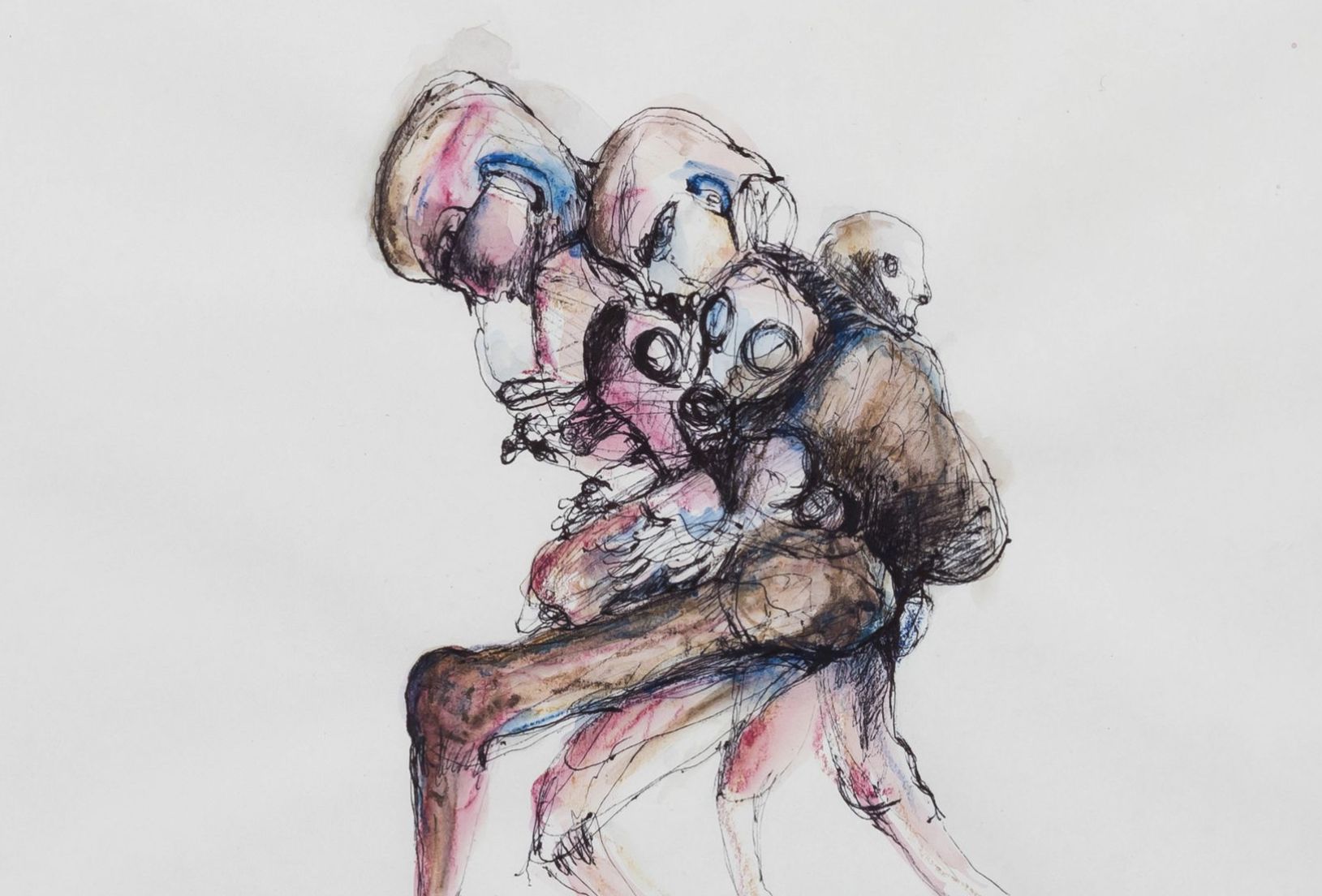
Zdzisław Beksiński's legacy to art history
Driven by a singular vision, Zdzisław Beksiński has left a dark yet fascinating imprint on art history, marking generations of artists with his exploration of fear and human existence.
Heir to an inimitable visual language, his legacy is a body of work that transcends time, where each canvas becomes a meditation on the dread and mystery of the human condition.
Beksiński's works, with their spectral figures and desolate landscapes, resonate like timeless echoes in the contemporary art world, inspiring an aesthetic that flirts with the abysses of the human soul.
His legacy extends far beyond painting, touching film, fantasy literature and the digital arts, where his nightmarish visions continue to captivate.
His depiction of labyrinthine architectures and gaunt silhouettes opened up a new visual space for exploring humanity's darker side.
Artists, film-makers and designers find his world an inexhaustible source of inspiration, drawing on his depictions of the apocalypse for raw material that is both fascinating and terrifying.
With deep textures, saturated colors and disconcertingly rigorous compositions, Beksiński has created an art that pushes the boundaries of traditional painting, opening the way to an inexhaustible dialogue between matter and spirit.
By capturing collective fear and the decay of existence, he gave the visual arts a language to express universal anxieties. Even today, his legacy remains an invitation to explore the unknown, anchoring his work in a singular and enduring place in contemporary art.
Know the artist : Zdzisław Beksiński
His signature
Not all of Zdzisław Beksiński's works are signed.
Although there are variations, here is a first example of its signature:

Appraising your property
If you own a work by Zdzisław Beksiński, please feel free to request a free valuation by completing our online form.
A member of our team of experts and certified auctioneers will contact you to provide an estimate of the market value of your work.
If you are considering selling your work, our specialists will also guide you through the various alternatives available to obtain the best possible price, taking into account market trends and the specific features of each work.
Response in less than 24h
Related topics

Rating and value of Claude Lalanne's sculptures
Claude Lalanne is a twentieth-century French artist whose sculptures set auction records.
Read more >
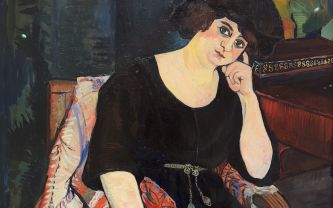
Rating and value of paintings by Suzanne V...
Suzanne Valadon is a twentieth-century French artist who produced paintings that are highly regarded and valued on the auction market.
Read more >
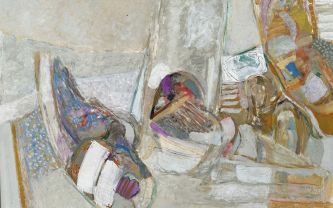
2024 price and value of the paintings, drawings, paintings of Chaf...
Chafik Abboud is a Lebanese artist who has produced non-figurative works that are highly valued and valuable at auction. Estimate in 24 hours
Read more >
Secure site, anonymity preserved
State-approved auctioneer and expert
Free, certified estimates
